Welcome to a world of bold colors, fragmented shapes, and creative genius. At our school, we recently celebrated an immersive and vibrant Cubism-based art project, which is beautifully displayed on our school walls. This blog post will take you on a journey through how our students discovered the world of Cubism, how the artwork was created, and how we transformed a simple wall into a gallery of artistic expression.
If you are an educator, parent, or simply an art lover, we hope this post inspires you to appreciate the power of creative learning and student engagement.
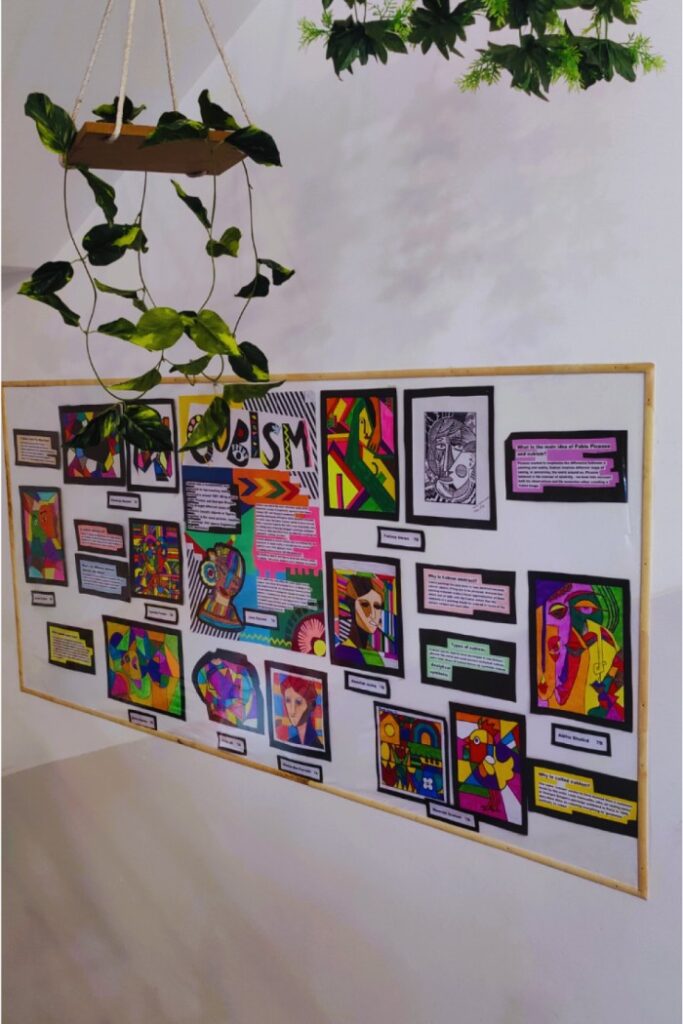
What is Cubism?
Cubism is one of the most revolutionary art movements of the 20th century. Pablo Picasso and Georges Braque pioneered it in the early 1900s, and it soon became known for its unique approach to form, shape, and perspective.
In Cubism, objects are broken down into geometric shapes and reassembled into abstract forms. Artists present multiple perspectives simultaneously, challenging traditional ways of representing reality. Cubism can be broadly divided into two types:
- Analytical Cubism – characterized by monochromatic color palettes and the breaking down of objects into facets.
- Synthetic Cubism – involves brighter colors, simpler shapes, and the inclusion of collage elements.
Teaching Cubism to students helps them think outside the box, explore abstraction, and understand that art doesn’t always have to be realistic.
Why We Chose Cubism for Our Art Project
As an art educator, my goal was to introduce students to influential art movements that transcended traditional drawing and painting. Cubism was a great choice to encourage experimentation, creative risk-taking, and spatial awareness.
We wanted our students to:
- Learn about famous artists like Pablo Picasso, Juan Gris, and Georges Braque
- Explore visual storytelling through geometric design
- Use bold colors and overlapping shapes
- Discover the freedom of abstract art
Moreover, Cubism allows for differentiated learning. Every student, regardless of skill level, can succeed and create something unique.
The Process: From Classroom to Corridor
The project involved a lot of planning, painting, and passion before the beautiful final display appeared on our school wall. Here’s how it came to fruition:
1. Introduction to Cubism
We began with a visual presentation that included famous Cubist paintings. Students learned about the history of Cubism and discussed how it broke with traditional art rules. Key questions guided the discussion:
- What makes Cubism different?
- Why did Picasso paint faces with two different angles?
- Can we find meaning in abstract shapes?
2. Sketching and Experimenting
Students were encouraged to sketch faces, animals, and objects using basic geometric shapes such as squares, triangles, and rectangles. They explored symmetry, asymmetry, and the use of vibrant colors.
3. Painting the Final Artworks
Using markers, paint, and colored pencils, the students created their final Cubist artworks. Each student had a unique style and approach. They expressed themselves freely while applying the principles of Cubism.
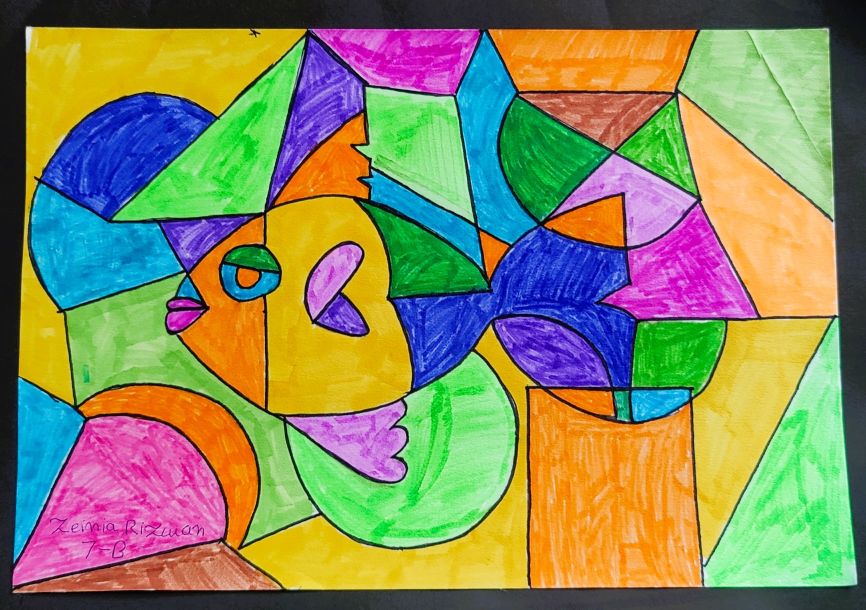
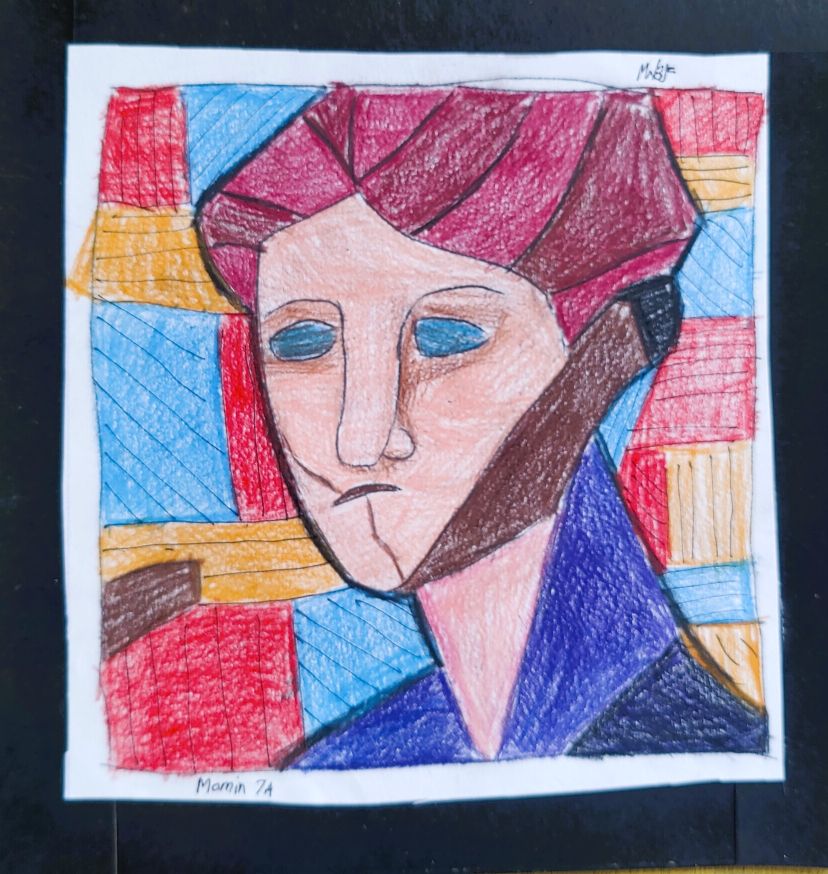
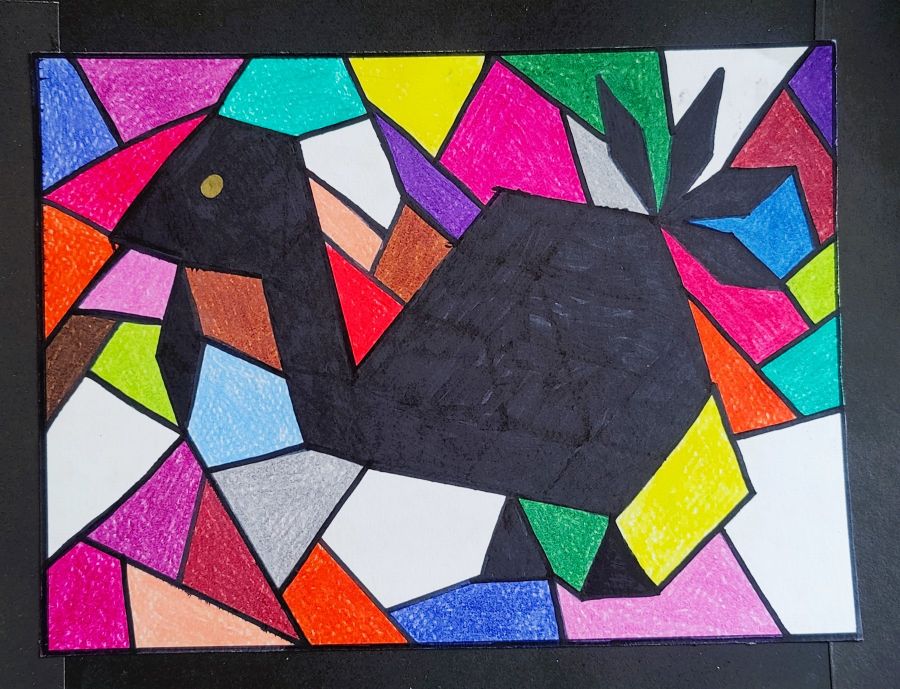
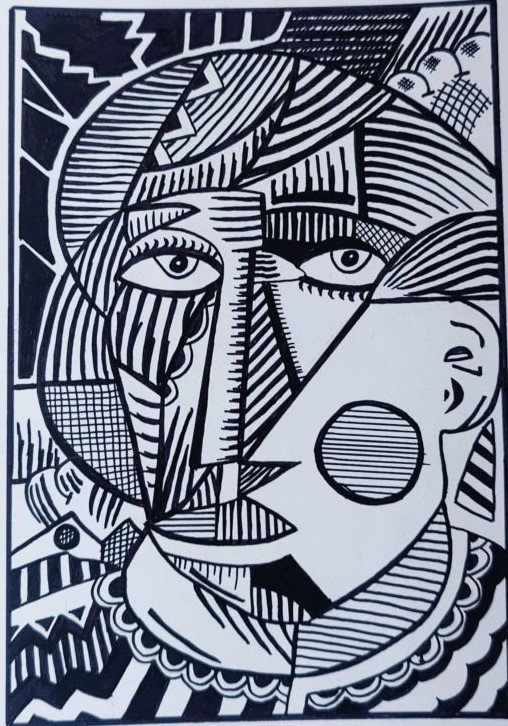
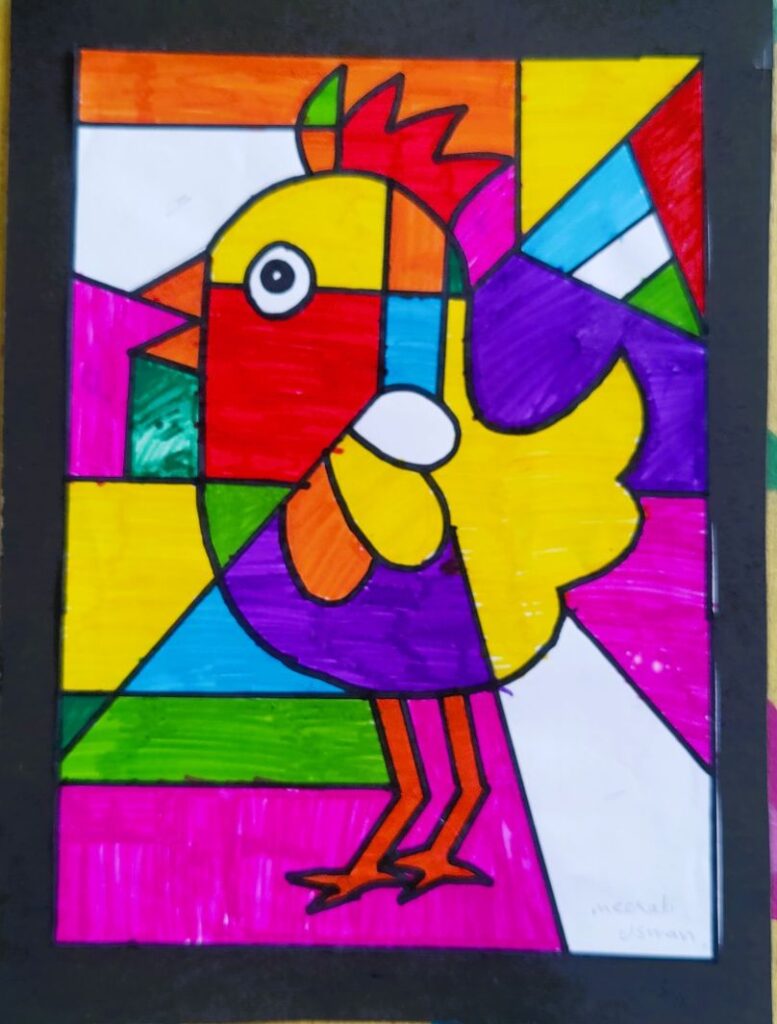
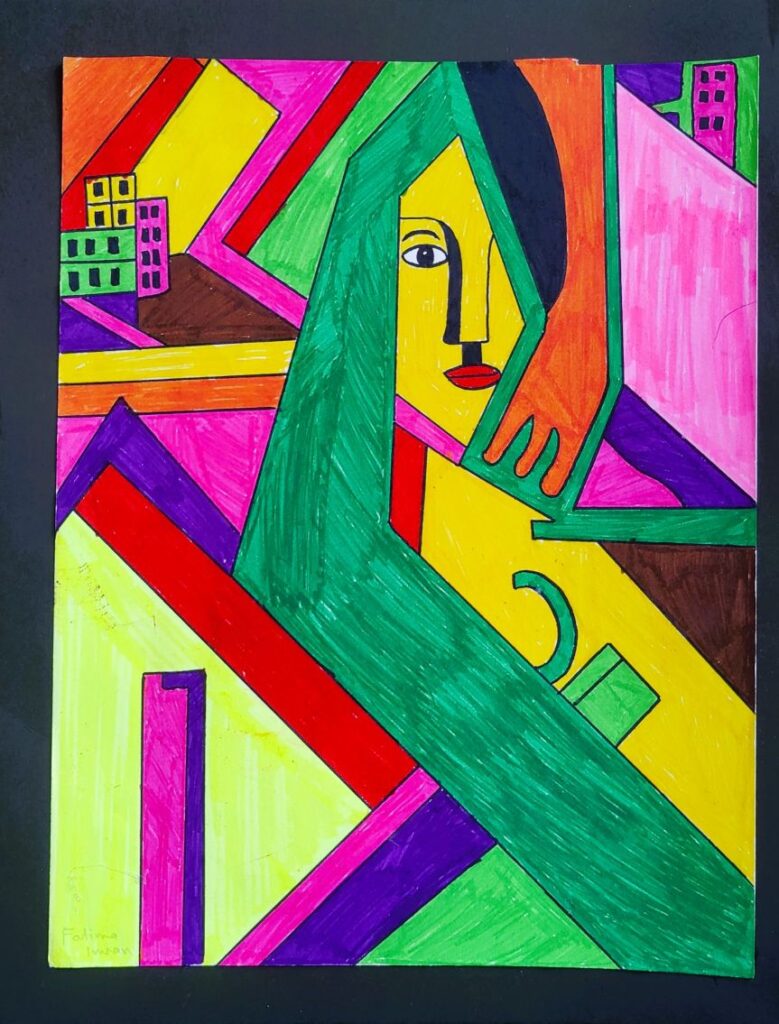
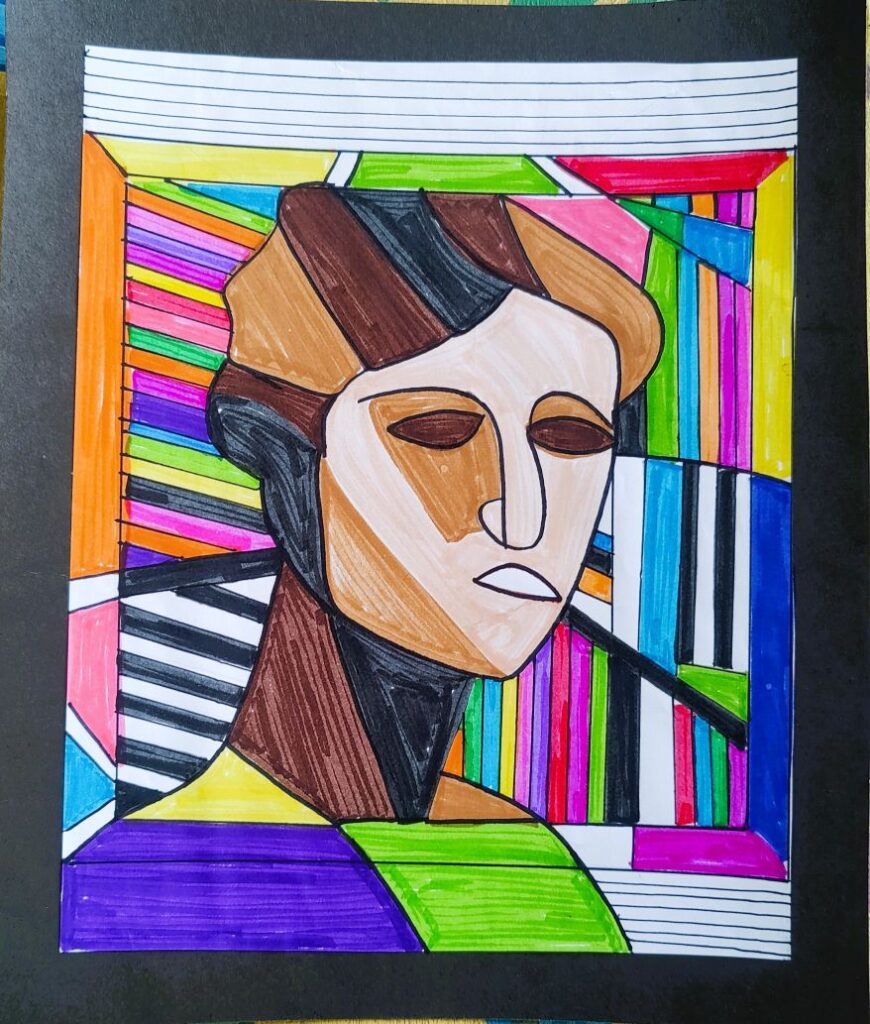
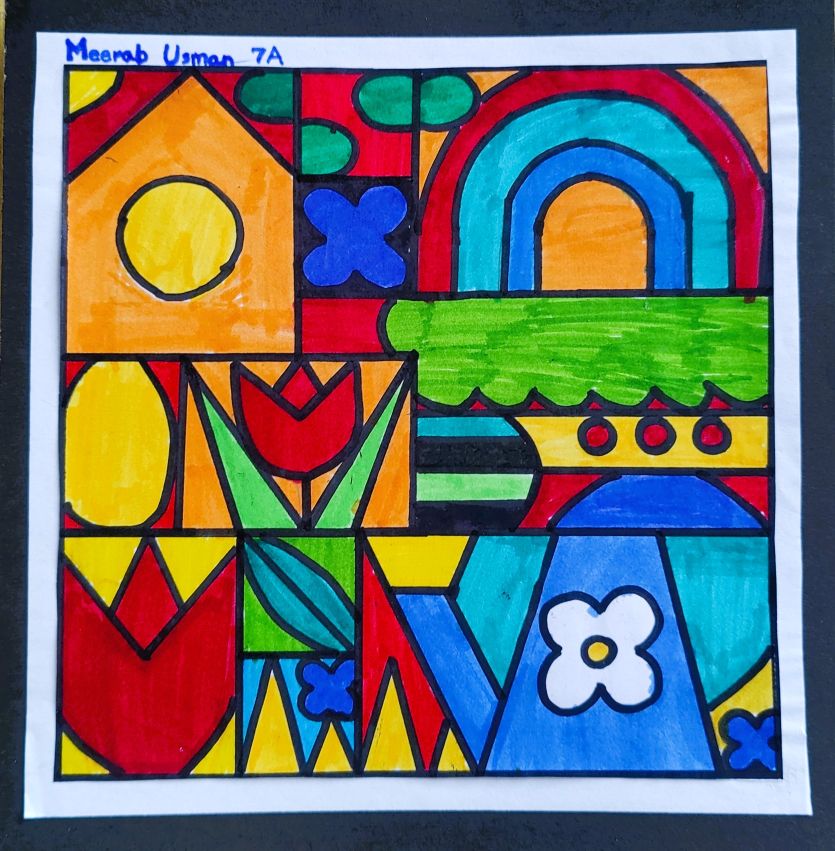
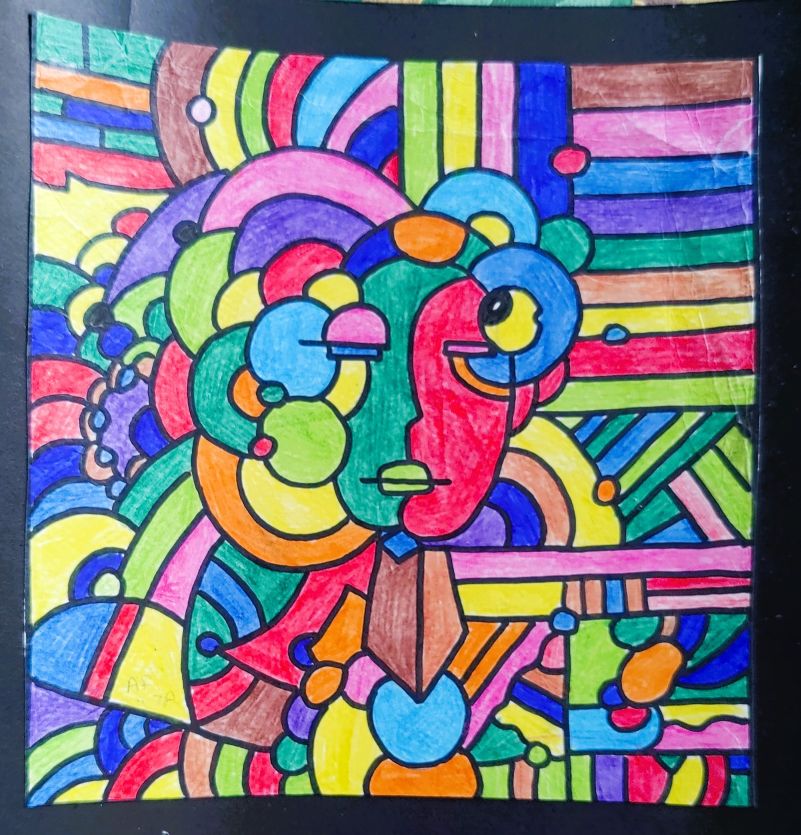
4. Floor Arrangement Before the Display
Before installing the artwork, we laid out all of the students’ drawings on the floor. This helped us visualize the final layout and decide on the best arrangement. It was a collaborative effort involving students, teachers, and volunteers.
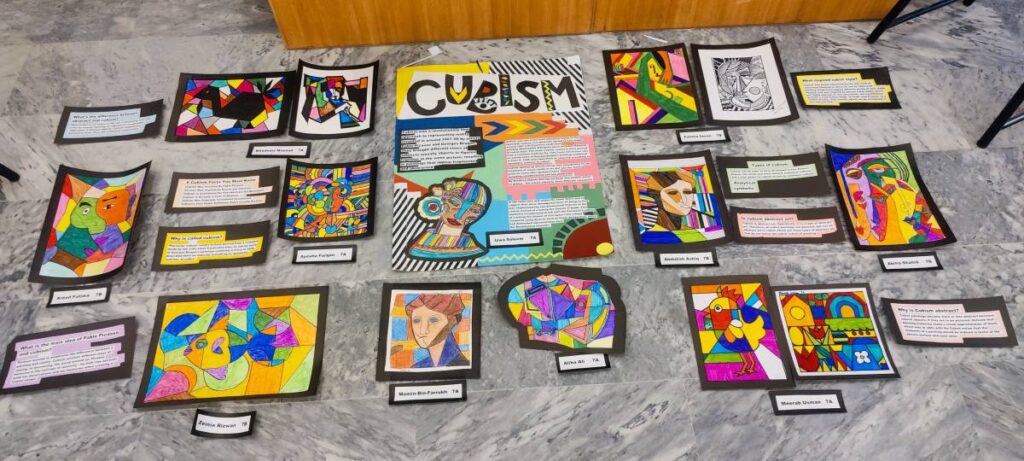
5. Creating the Wall Display
Each artwork was carefully crafted using colorful chart paper to make the wall glow with energy. We added a personal touch by labeling each piece with the student’s name. Between the art pieces, we included short printed text explaining:
- What is Cubism?
- Types of Cubism
- Quotes from famous Cubist artists
- Why is Cubism important in modern art?
We also designed a large central collage poster to act as the focal point of the wall. It combined elements of different Cubist themes and colors, giving the entire display a unified and powerful look.
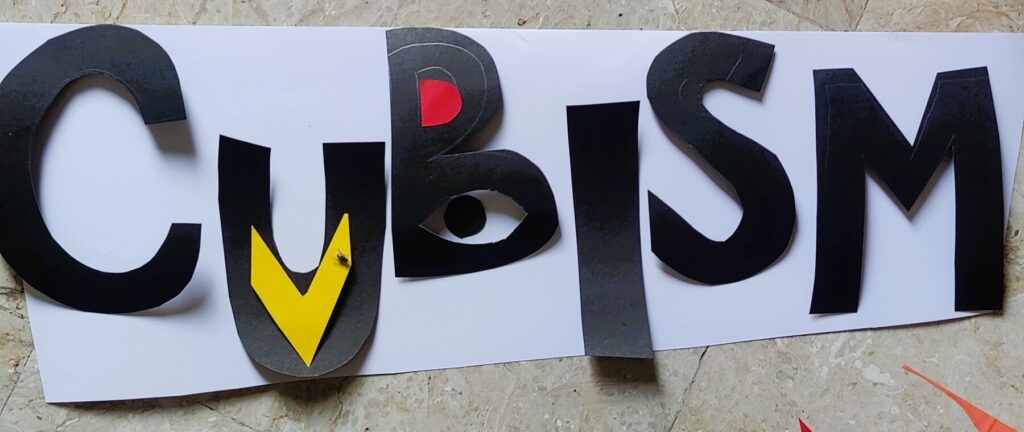
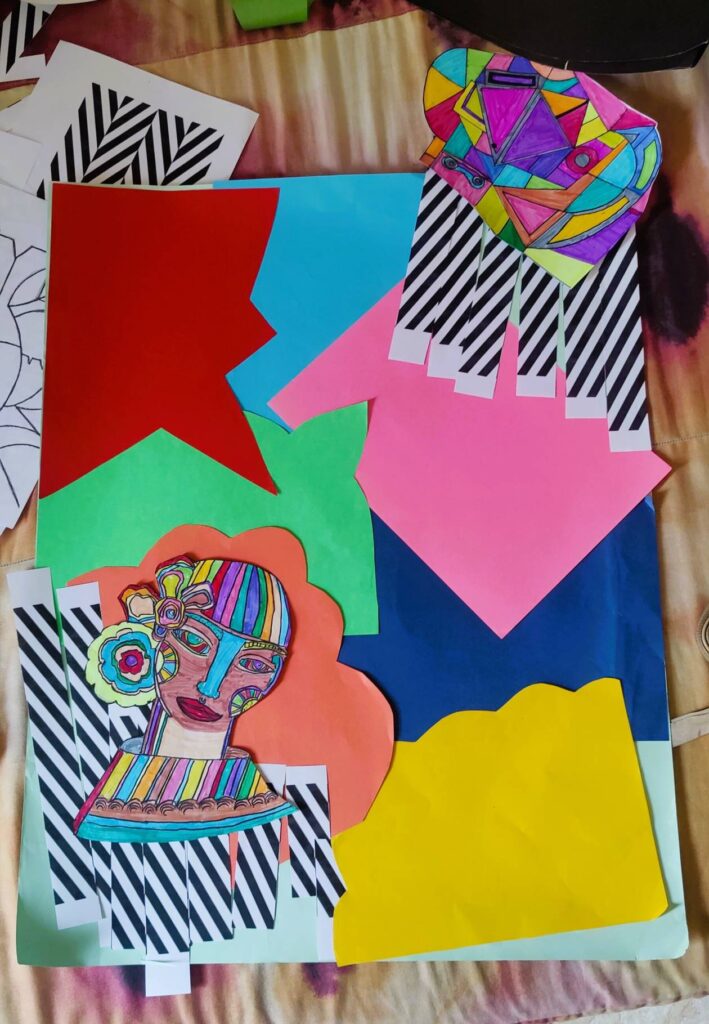
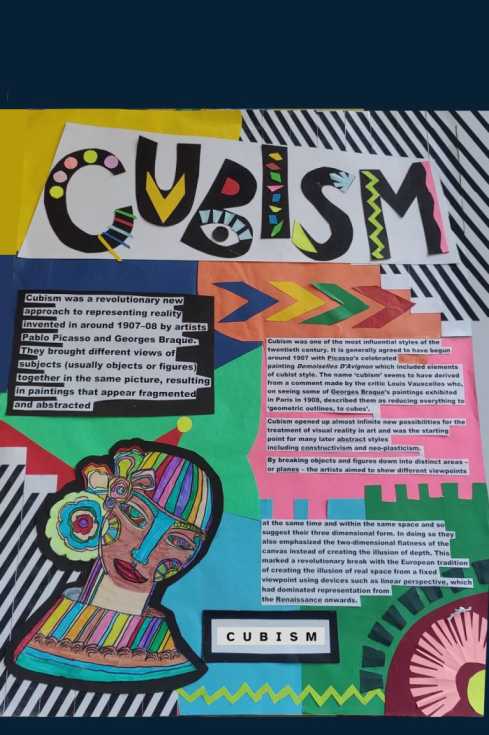
Why Art Displays Matter in Schools
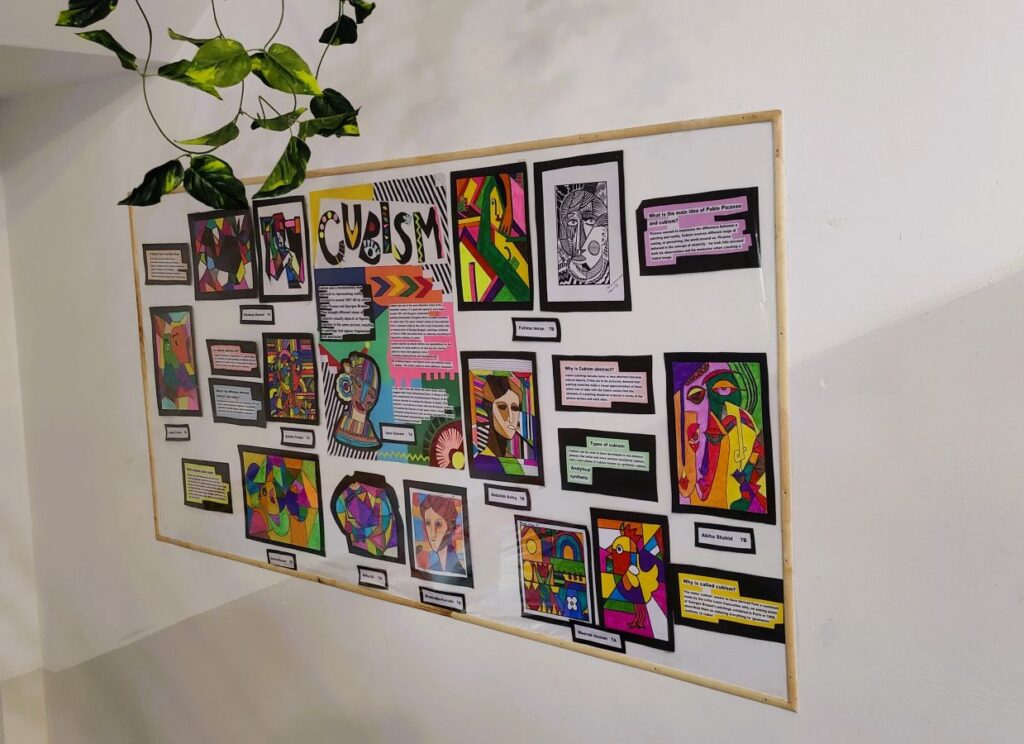
An art display is more than just decoration. It is a celebration of a student’s voice, talent, and creative courage. Why do we prefer displays like this?
- Recognition: Students feel proud when their work is showcased. It boosts their confidence.
- Encouragement: Younger students are inspired by what they see and become eager to participate.
- Educational Value: Displays can teach history, culture, and critical thinking through the power of visual storytelling.
- Positive School Culture: A vibrant wall makes the environment more welcoming and exciting.
Student Reactions and Reflections
One of the best parts of this project was hearing what our students had to say:
- “I didn’t know art could look like this! I loved making faces with funny shapes.”
- “My mom drew a picture of my painting on the wall. She was so happy!”
- “I learned that Picasso didn’t follow rules, and I want to try it too.”
These illustrations demonstrated that the students not only enjoyed the process but also grasped the deeper meaning of Cubism.
Watch the Process Come to Life
See Our Cubism Art Wall in Action!
- A bold and expressive wall filled with student creativity
- Geometric, abstract artworks inspired by Picasso and Braque
- A stunning collage centerpiece and custom name labels
Watch how our Cubism display came together—from creative sketches to a bold, geometric wall full of student imagination. The video highlights vibrant colors, abstract shapes, and the joyful process of building a gallery that celebrates young artists.
Watch the transformation unfold—and stay tuned for more inspiring classroom displays that celebrate student creativity!
Related Blog Posts You Might Like
Final Thoughts
The Cubism Art Display was more than just an art project. It was a celebration of creativity, learning, and the power of expression. Each piece on the wall tells a story—not just of color and form, but also of imagination and growth.
As teachers, we find immense joy in seeing our students shine through their art. We look forward to more creative journeys where learning is colorful, engaging, and memorable.
Stay inspired, stay curious, and keep creating!


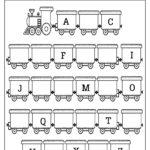

Pingback: Tile Designing & Radial Patterns Wall Display - 1thousandideas
Can I just say what a aid to seek out someone who really is aware of what theyre talking about on the internet. You undoubtedly know how you can deliver a problem to gentle and make it important. Extra people must learn this and perceive this aspect of the story. I cant believe youre no more in style since you positively have the gift.
That’s so sweet of you to say!💛 I’m really happy you liked the post and found it meaningful.
Hello there! Do you know if they make any plugins to help with SEO? I’m trying to get my blog to rank for some targeted keywords but I’m not seeing very good success. If you know of any please share. Appreciate it!
Yes, I use Yoast SEO — it’s really helpful for optimizing posts and managing keywords. You should definitely give it a try!
What i don’t understood is actually how you’re not really much more well-liked than you might be now. You’re very intelligent. You realize thus significantly relating to this subject, made me personally consider it from a lot of varied angles. Its like women and men aren’t fascinated unless it is one thing to accomplish with Lady gaga! Your own stuffs excellent. Always maintain it up!
Great write-up, I’m normal visitor of one’s website, maintain up the nice operate, and It is going to be a regular visitor for a lengthy time.
Just wanna input on few general things, The website design is perfect, the written content is really great : D.
Great write-up, I?¦m regular visitor of one?¦s website, maintain up the excellent operate, and It is going to be a regular visitor for a lengthy time.
Youre so cool! I dont suppose Ive learn something like this before. So good to find any person with some unique thoughts on this subject. realy thank you for starting this up. this web site is one thing that’s wanted on the web, somebody with a little bit originality. useful job for bringing one thing new to the web!
Pingback: Arabic Calligraphy Student Art Wall: - 1thousandideas
Hey! This is kind of off topic but I need some help from an established blog. Is it very hard to set up your own blog? I’m not very techincal but I can figure things out pretty fast. I’m thinking about creating my own but I’m not sure where to start. Do you have any ideas or suggestions? Thanks
Clear explanation
What’s Going down i am new to this, I stumbled upon this I have discovered It positively useful and it has helped me out loads. I’m hoping to contribute & assist different customers like its aided me. Good job.
Great perspective
In the great pattern of things you’ll get a B- for effort. Where you lost us ended up being in the particulars. As people say, the devil is in the details… And that could not be much more correct here. Having said that, permit me inform you just what did give good results. Your text is actually pretty convincing and that is most likely why I am making the effort in order to opine. I do not make it a regular habit of doing that. Secondly, whilst I can see a jumps in logic you come up with, I am not really confident of exactly how you appear to unite the ideas which inturn make the actual final result. For right now I will yield to your position but hope in the foreseeable future you actually link your facts better.
you have a great blog here! would you like to make some invite posts on my blog?
“Thank you! That means a lot. I might be interested—could you please share more details about what kind of posts you’re looking for?”